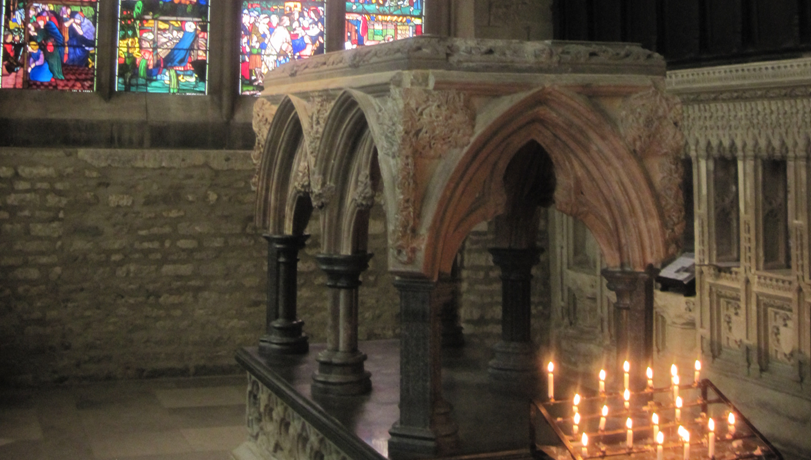 |
| St. Charles is often depicted rejecting his crown of state for a crown of thorns. |
 |
| BCP Calendar with St. Charles |
Charles was born in 1600, son of King James VII of Scotland and Anne of Denmark. He became Prince of Wales in 1603 at the Union of the Crowns when James became James I of England also. It was during James's rein that the Church of England began to re-establish high-church elements within the Anglican tradition. But at the same time a low-church faction within the church, known as the Puritans. Succeeding Archbishops of Canterbury and other Church of England bishops re-emphasized liturgical ceremonies and the decorating of churches with religious iconography. Puritans however were opposed to any sort of decoration and even called for the re-organisation of the church hierarchy through dismissing the historic episcopate. Charles succeeded to the throne in 1625 and later appointed William Laud, previously a bishop of St. Davids, Wells and London, to the see of Canterbury. Laud was a firm supporter of the high-church argument in the Church and was opposed to Calvinism. Laud and Charles carried out a number of reforms in the Church based on retaining it's catholicity. Both men with much of England's support battled against Puritans and Presbyterians, insisting upon episcopacy, and the following of the Book of Common Prayer, which called for a high-church liturgy. The Puritan vs. Royalist debate turned into civil war in 1640s after Laud tried to impose a new Prayer Book on the rebellious Scottish Calvinists and England's Puritan's too feared that he would suppress their voice in the Church. When it came to an end, King Charles was captured and condemned to death by a Puritan parliament. He was offered his life, and even his throne if he would consent to the destruction of the historic episcopate but refused. Destroying the Episcopate would have made the Church of England into a sect, rather than a part of apostolic succession and of Christ's Church. On January 30, 1649 Charles was beheaded, and since recognized as a martyr as he died for the survival of the Church of England, canonized, and added to the Book of Common Prayer as a major feast after the restoration. His cult has survived since his death, known as the Society of King Charles the Martyr.
One of the many problems troubling the Church, including the Catholic, Anglican and Orthodox Churches, is unity. Unity is presented as crucial to Christ's Church because it wipes away the face of hatred or contempt within that holy institution. Charles the martyred king, though not the more typical, self humbling saint found on this blog, is a focal point for that unity and reminds us of the importance of the oneness of the Church descended from Christ's work while he visited us 2000 years ago and glued to him, to doing that work today. The one and ancient liturgy used by the Church, the one and ancient episcopal polity of the Church, the one and ancient faith of the Church should not contradict the one, ancient, ever-living and ever-saving savior, Christ, who is the Church. For the Church to spread the one true faith of the one God, we must be one, united body.
Collect (adapted from the "Festivals and Lesser Festivals of the Church of England").
King of kings and Lord of lords, whose faithful servant Charles prayed for those who persecuted him and died in the living hope of your eternal kingdom: grant us so to follow his example that we may love and bless our enemies and celebrate the and spread the one good news together, through the intercession of your Son, Jesus Christ, who is alive and reigns with you in the unity of the Holy Spirit, one God, now and forever. Amen.
 |
| Church Unity: The First Council of Nicaea. |

No comments:
Post a Comment